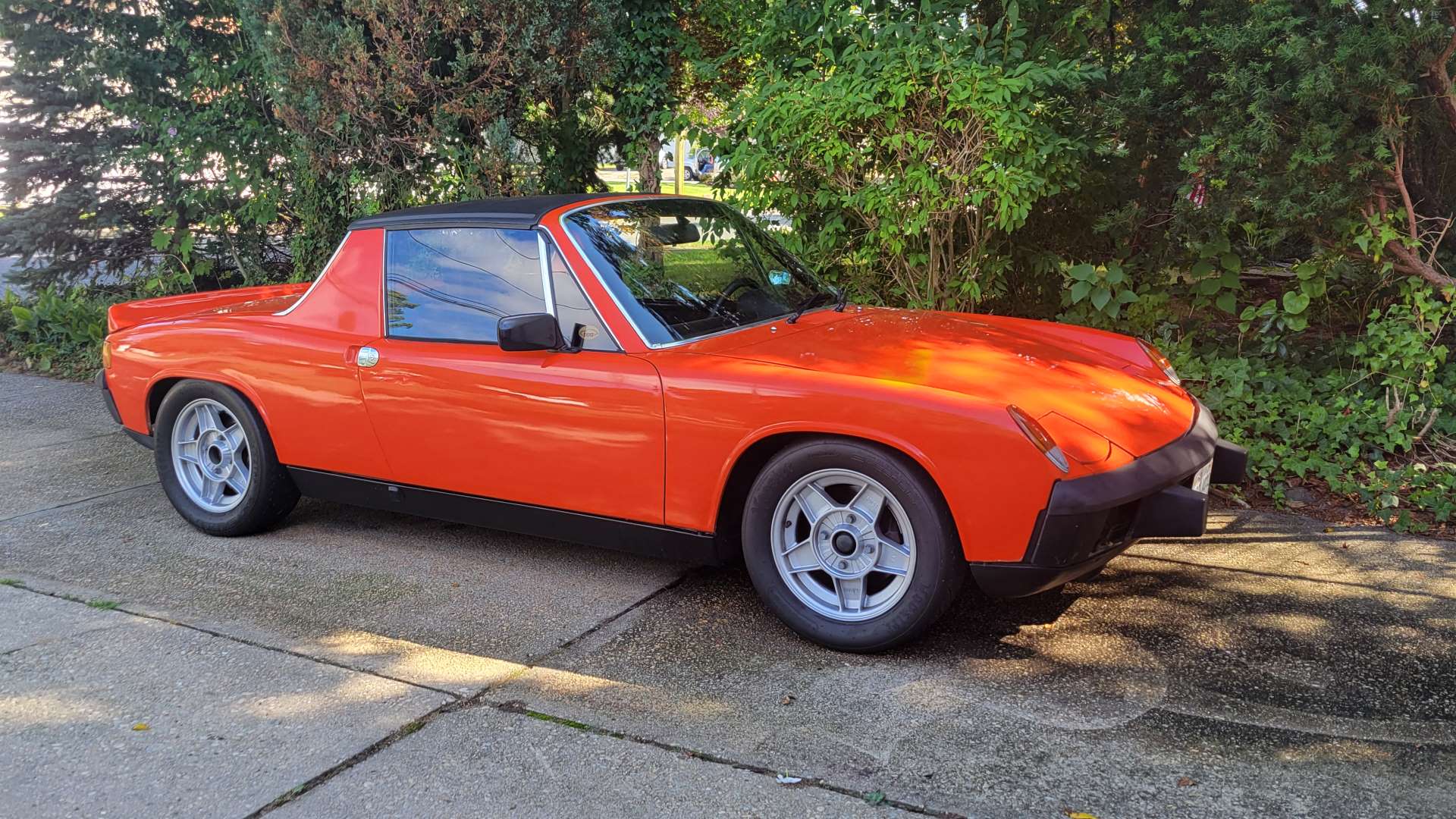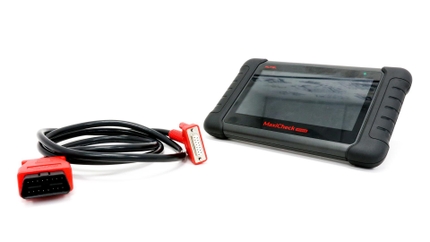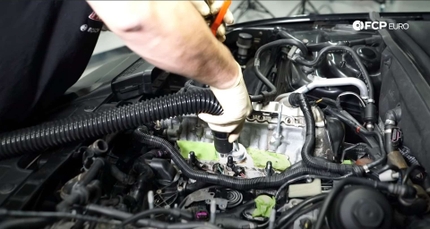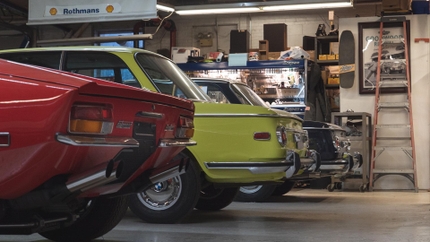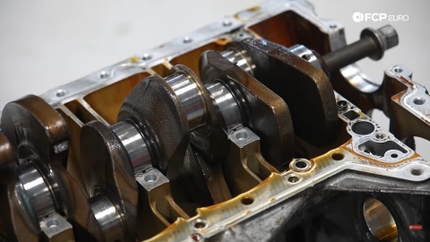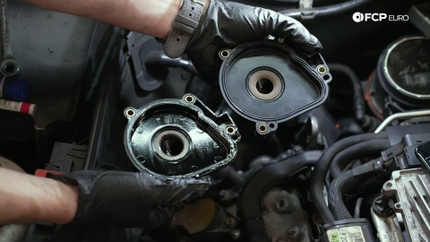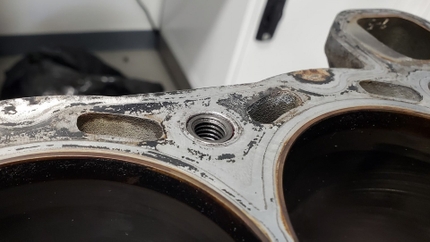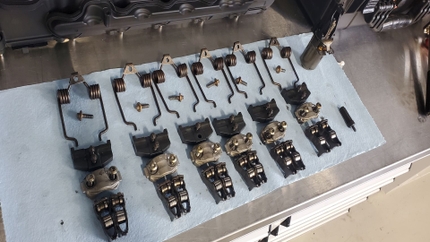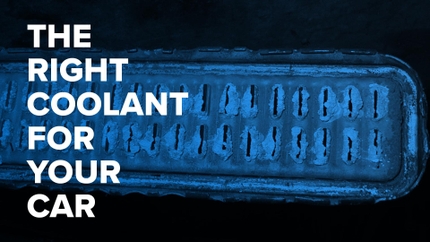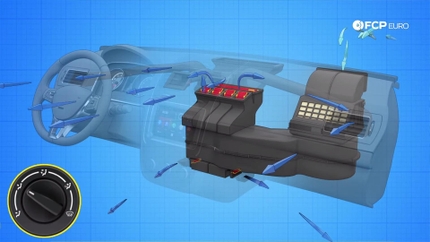- 07/19/2021
- 4 Min Read
- By: Christian Schaefer
How To Replace Mercedes W205 Rear Brake Pads & Rotors (C300, C350e, C400)
Properly performing brakes are a necessity on any vehicle. Without them, you’re a liability to yourself and everyone around you. Mercedes-Benz’s W205 may be relatively new, containing a host of safety technology, but none of that tech matters without good brakes. Whether you’ve just acquired it or have had it for years, we recommend seriously checking the condition of the brakes on your Mercedes if you aren’t aware of their last replacement.
On all cars, the brakes will be larger at the front to prevent the car’s rear from slowing quicker than the front, causing you to lose control. The reduced force applied to them will cause them to last longer than the fronts, but they are just as critical to stopping performance. Changing the front or rear brakes on your Mercedes is a DIY job and can be done with simple hand tools by those with little experience. Follow along with this DIY to replace those worn-out brakes!
Mercedes-Benz models and years applicable:
|
|
|
Symptoms of worn Mercedes W205 rear brake pads and rotors:
- A grinding coming from the front, under braking
- Juddering or a vibration coming from the front, under braking
- Deep grooves on the rotor surface
- Dark-colored deposits on the rotor surface
- The vehicle’s steering pulling to one side, under braking
All disc brake systems have a front bias, meaning that the front brakes do most of the braking. Their increased braking responsibility will lead to more frequent replacement intervals when compared to the rears. However, driving with excessively worn rear brakes still creates reduced stopping ability.
Once the brake pad material is completely worn away, the pad’s metal backing plates are forced against the rotor, destroying it. You’ll hear an intense grinding noise under braking when this happens. Additionally, metal shavings will come off of the rotors and cover your wheels. If these shavings get wet, they’ll coat your wheel in rust.
How much will it cost to replace Mercedes W205 brake pads and rotors?
To replace the wear items on your rear brakes, you need a set of brake pads and two brake rotors. We offer a kit included in the FCP Euro Lifetime Guarantee containing all the parts necessary for a rear brake service. That includes TRW Ultra ceramic brake pads, two Zimmermann rotors, and a new pad wear sensor. The kit will cost right around $260.
How long will it take to replace Mercedes W205 brake pads and rotors?
The service length will depend on what you choose to do. Replacing the pads and rotors is a straightforward process requiring removing and reinstalling not too many parts. This part of the job should take 30 minutes per corner.
To completely service the brakes, you’ll need to flush the brake fluid as well. Having a pressure bleeder simplifies this process and significantly speeds it up. If you don’t have a pressure bleeder, you’ll need another person to help you out. Either way, bleeding the brakes shouldn’t take longer than 20 minutes.
Parts required to replace Mercedes W205 rear brake pads and rotors:
Tools required to replace Mercedes W205 rear brake pads and rotors:
Steps required to replace Mercedes W205 rear brake pads and rotors:
Step 1: Set the brakes into “Fitting Position”
Get into the driver’s seat of your Mercedes and shut the door. Press the start button to get into the first key position before holding down the phone and the OK button on the steering wheel for about five seconds. That’ll bring up the menu where you can select the “Brake Pad Replacement” option.
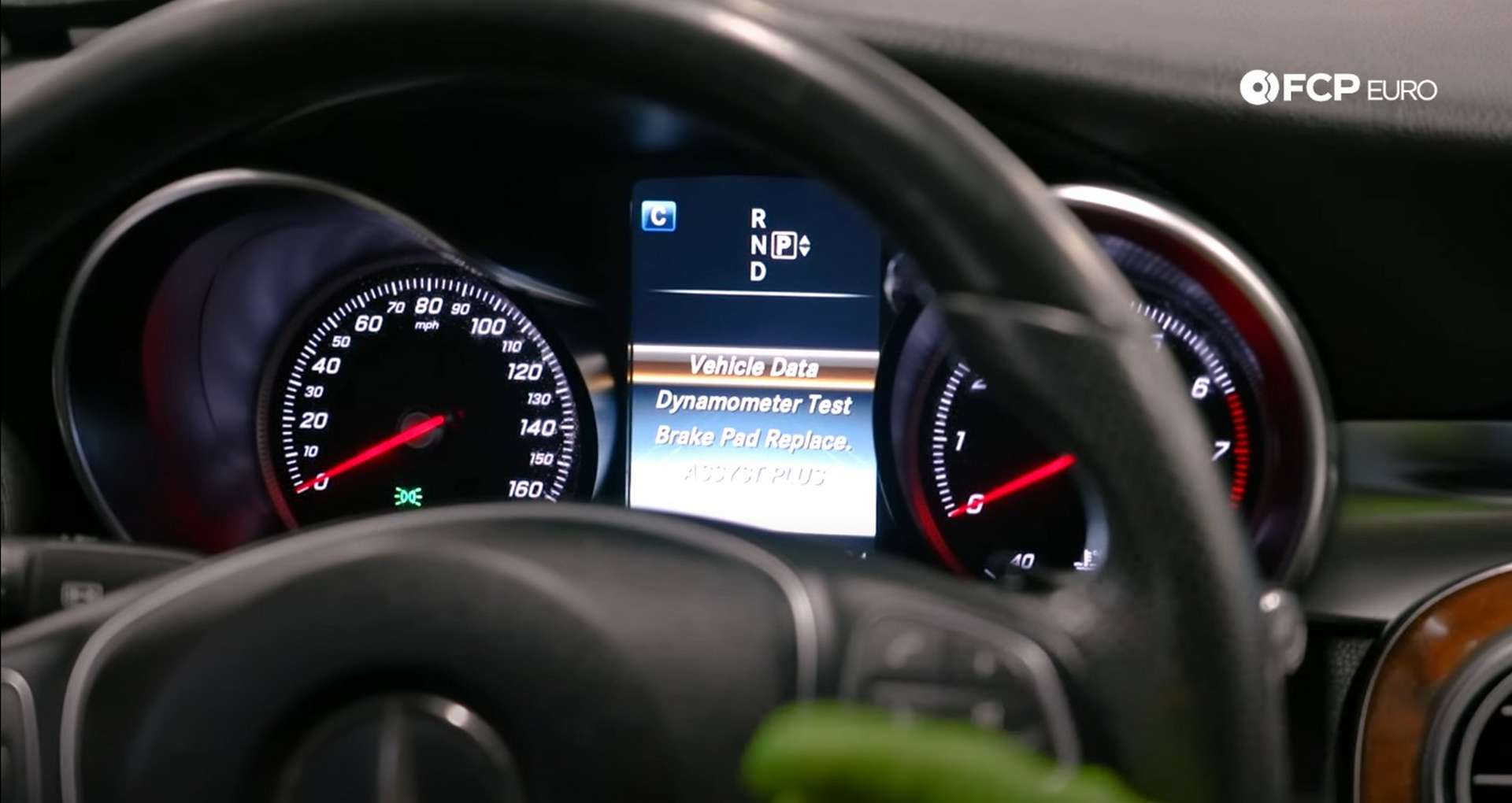
Select that option and press OK. You’ll hear the parking brake retract in the rear of the vehicle, which will let you know that you’re in fitting position and ready to start the service.
Step 2: Remove the rear caliper from the bracket
Jack up the rear of the car and place it onto jack stands. Then, use a 17mm socket to remove the lug bolts so you can remove the wheel.
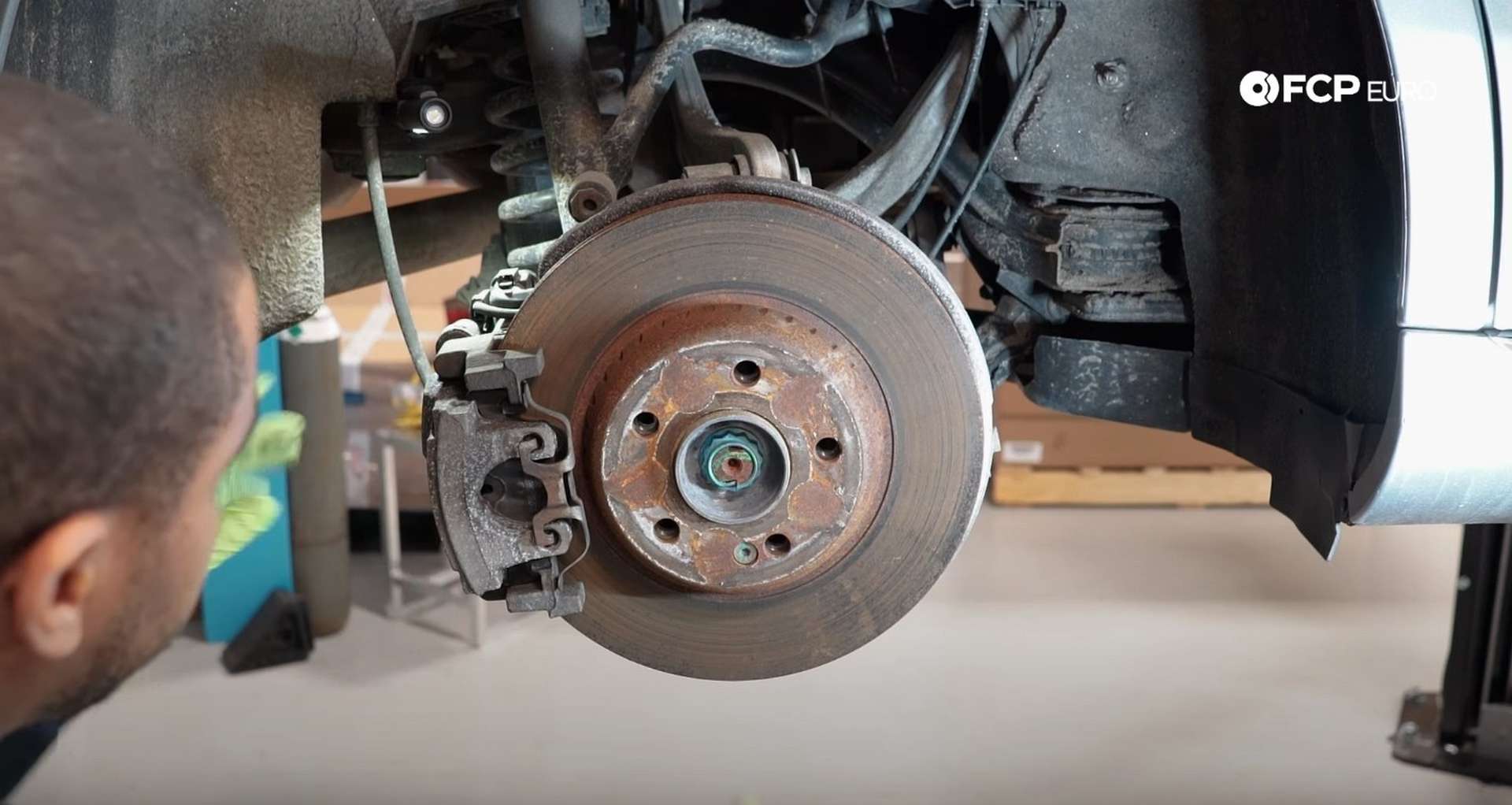
First, remove the anti-rattle clip from the front of the caliper. Pull the bottom of the clip away from the hub and then pull it off. Next, use a T30 Torx bit socket to remove the set screw from the rotor. Ensure that the bit is fully inserted into the screw to prevent it from being stripped.
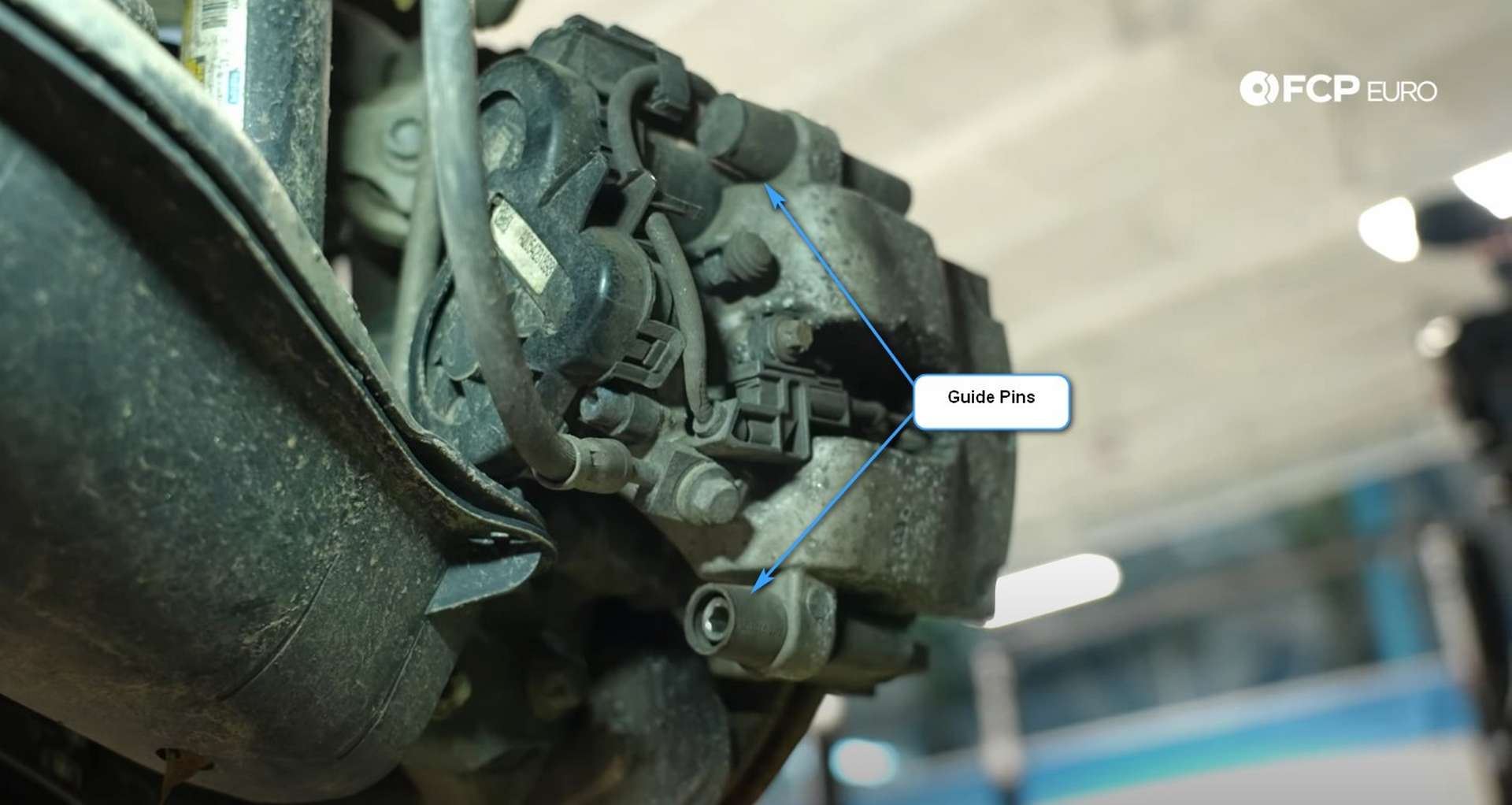
Next, head to the back of the caliper and locate the guide pins. Remove their dust caps and then use a 7mm hex bit socket to remove them from the caliper from its mounting bracket. The brake pads will stay behind in the bracket, so you need to remove the pad wear sensor from the pad. Just pull it off to remove it from the pad and then pull it out of the caliper.
Then pull the caliper away from the car to depress the piston. Doing this will create space between the pads and the rotor, allowing you to pull the caliper off more easily. When you remove the caliper, don’t let it hang by its brake line. The caliper’s weight will put a significant strain on the rubber line and can cause it to tear. You can use zip-tires, wire coat hangers, or the caliper hangers linked above, among other things, to hang the caliper out of the way.
Step 3: Replace the rotor
Use an 18mm wrench or socket to remove the caliper bracket’s two mounting bolts.
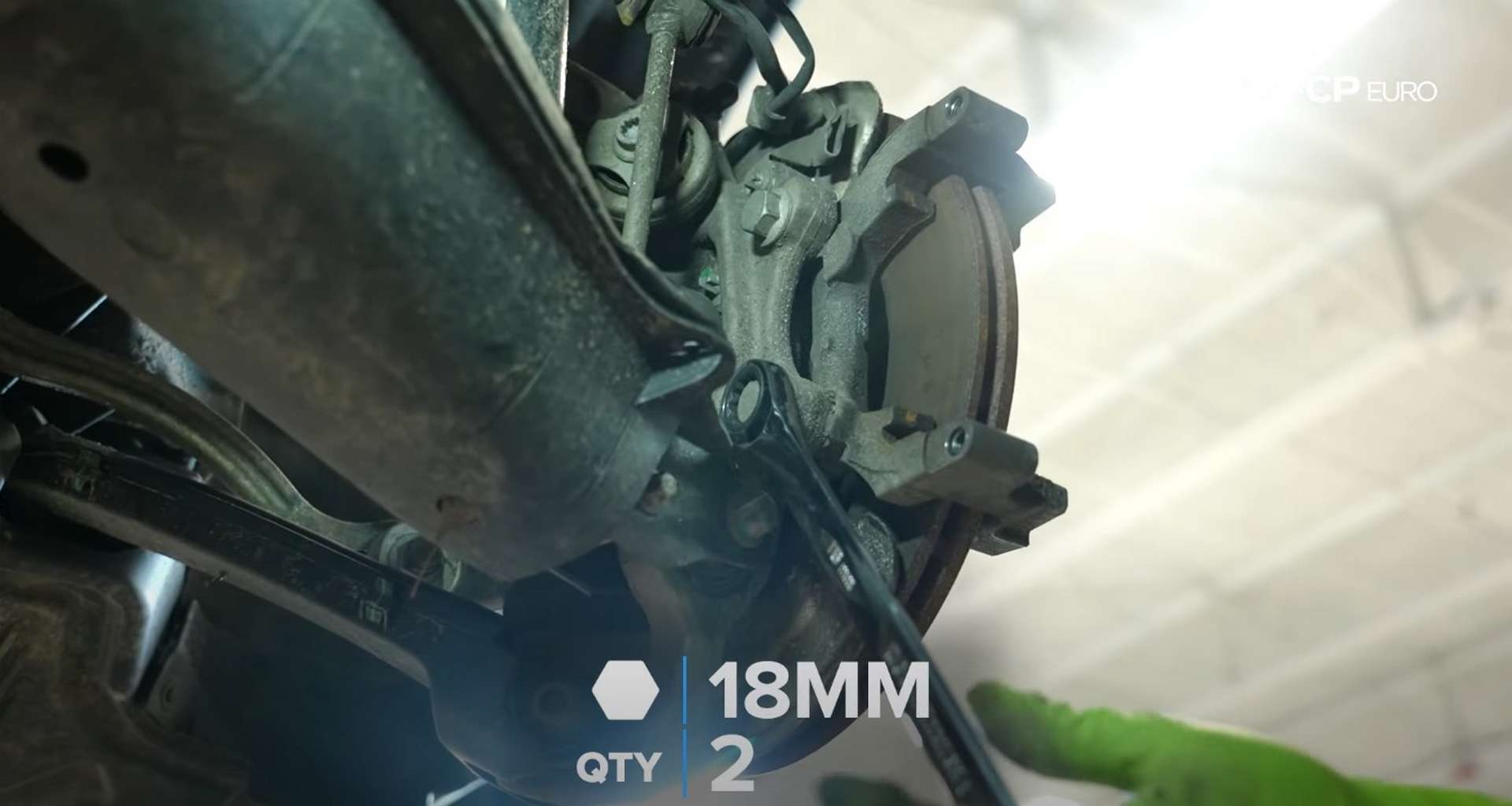
Remove the bracket from the knuckle and then pull the rotor off the wheel hub. If corrosion is present on the hub, you may have a hard time removing the rotor. Hit the rotor with a hammer to break the rotor free of corrosion.
Use a steel bristle brush or a wire wheel to remove as much rust and corrosion as you can from the hub’s mating surface and the caliper bracket. Clean surfaces will ensure that fitting the new brake components goes smoothly.

Then, fit the new rotor to the hub and secure it in place with the set screw. Use a T30 Torx bit socket to tighten the screw. After that, refit the caliper bracket to the knuckle. Thread the bolts in by hand to prevent cross-threading. Then, use an 18mm socket or wrench to tighten and torque the bolts to 60Nm, plus an additional 45° of rotation.
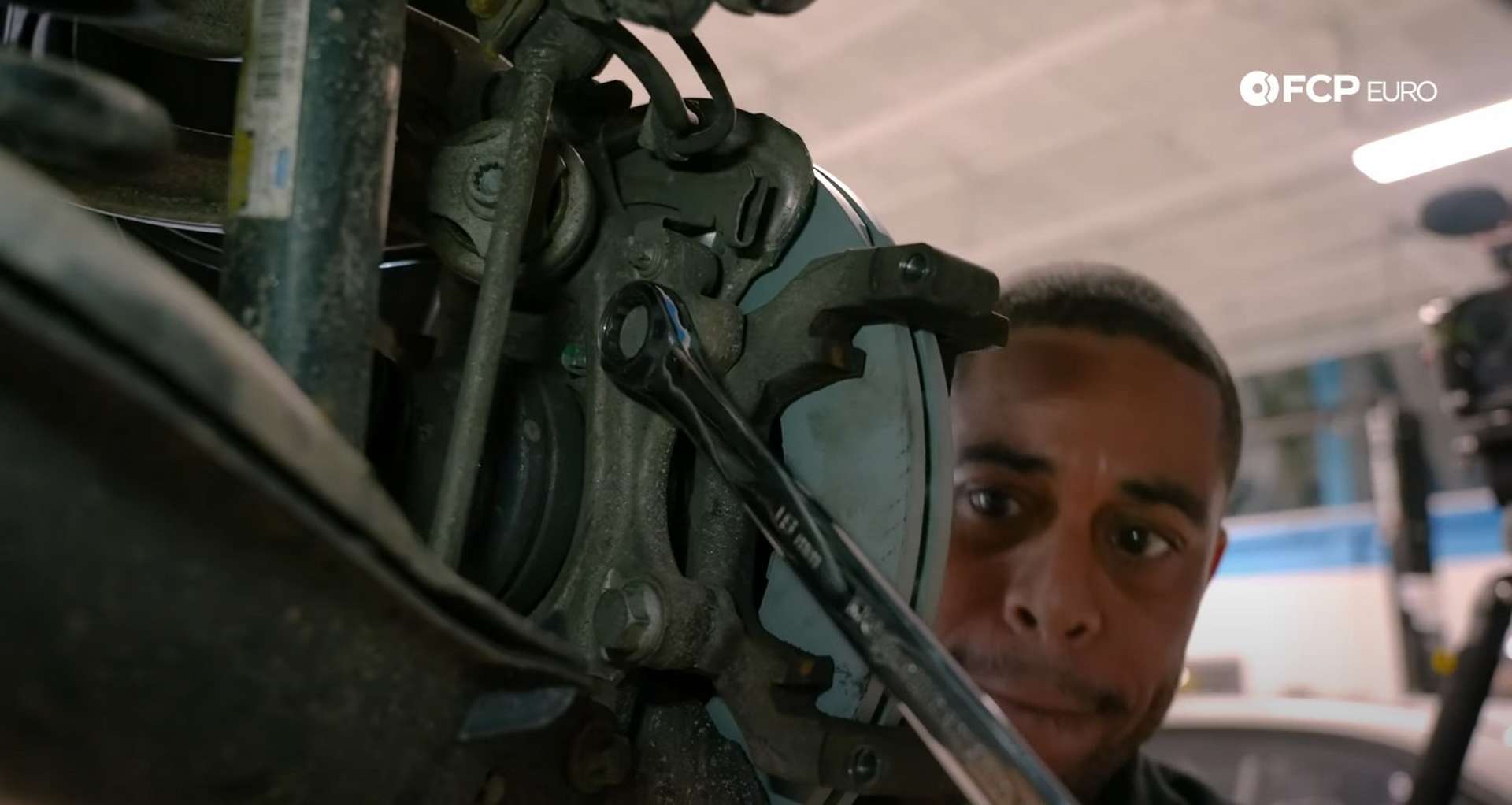
Step 4: Refit the caliper and new pads
Remove the caliper from its hanger and use the compressor tool to press the piston back into the caliper.
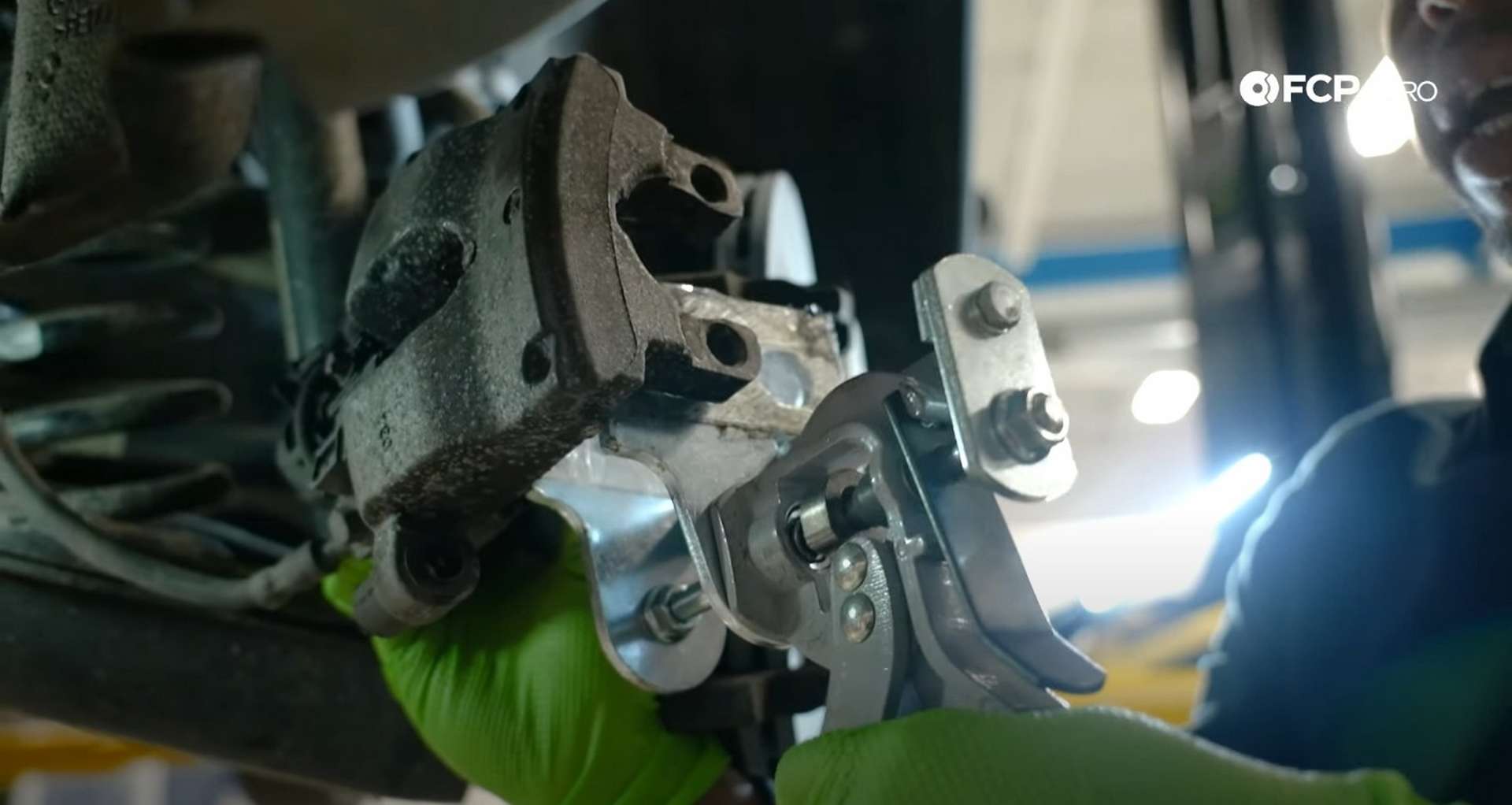
Next, ready the new pads for the caliper. The passenger’s side inner pad will be the only one with the wear sensor. Fit the new sensor into the pad and then place both pads into the caliper bracket.
Take the caliper and fit it over the pads into position on the knuckle. Put the pad wear sensor’s connector through the top of the caliper.

Fit the guide pins once the caliper is in position. Thread them in by hand with a 7mm hex bit socket before tightening them with a ratchet. Refit the dust caps once the pins are tight. Then plug the pad wear sensor into the connector on the caliper.
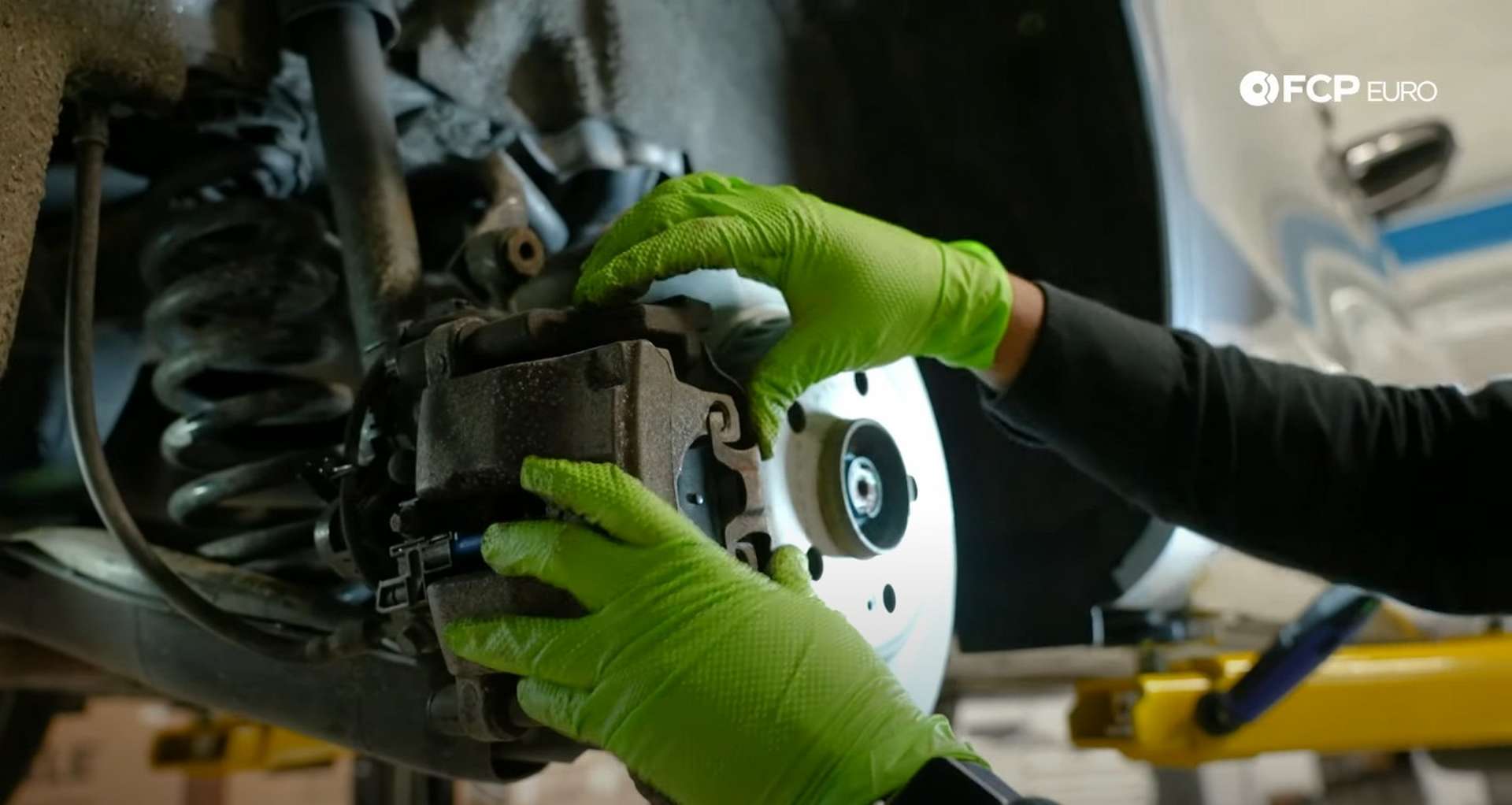
Lastly, refit the anti-rattle clip to the caliper. Then refit the wheel and set the car onto the ground.
Mercedes W205 Rear Brake Caliper Torque Specs:
- Mercedes-Benz Rear Caliper Bracket Bolts = 60Nm or 44 ft-lbs of torque, plus 45°
Now that your rear brake pads and rotors have been replaced, you can get back to safely driving your vehicle on public roads. If you're interested in more DIYs for your BMW, you can visit fcpeuro.com and subscribe to our YouTube channel.

